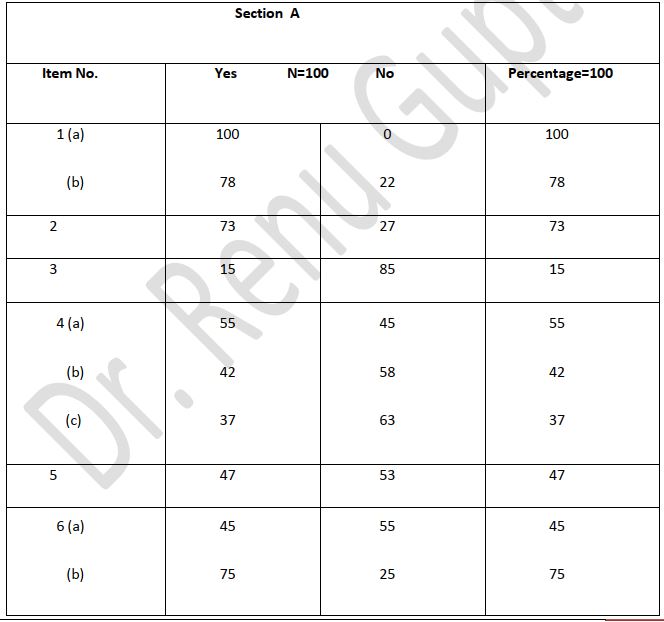UTILISATION OF TECHNOLOGY AND ELECTRONIC MEDIA IN EDUCATION
Abstract
The aim of the paper was to study the utilization of technology in education and to understand the role of electronic media as a technological innovation in education. The data was collected from 100 respondents i.e.50 students and 50 teachers by using random sampling technique. The findings of the study indicated that Technology has become an inevitable tool for modern education. It has helped in improving the tasks of teacher, facilitating the process of teaching and learning and enriching the aims of education. It is of great importance in the educational development of students. It has also been found that electronic media provides an opportunity to develop study habits among the students. It is essential in teaching-learning process. Respondents think that applications of electronic media are needed to bring about qualitative as well as quantitative changes in the field of education.
Downloads
References
Antonysamy, L. (1989). Teaching environmental concepts to school drop-outs through video and charts. M.Phil.,Edu., Madurai Kamaraj Univ.
Asija, Ranveer Pratap (1990). Teaching competence as related to development of skills specific to teaching and biology through microteaching among prospective secondary school teachers. Ph.D., Edu. Panjab Univ.
Biswal, Bhabagrahi. (1992). Educational Telecasts: Research Priorities. Indian Educational Review, 27(2), 116-23.
Buckley, B. C. et al., (2004). Model-Based Teaching and Learning with Biological tm: What Do They Learn? How Do They Learn? How Do We Know? Journal of Science Education and Technology, 13(1), 23–41.
Dharunkar,V.L. (1992)(a). Education in Marathwada Region Newspapers: A Review. Indian Educational Review, 27(2), 124-28.
Dutta, Ram, (1990). Integration in Microteaching. Indian Educational Review. 25(1) 41-55. Eggleston, J.: (1992), Teaching Design and Technology Education, Open University Press. Developing Science and Technology Education.
Fishman, B. J. (1996). High-end High School Communication: Tool Use Practices of Students in a Networked Environment. Unpublished Doctoral Dissertation, Northwestern University, Evanston, IL.
Gandhi, K. A. (1992). Microteaching Approach for Students-Teachers. The progress of Education, LXVII (1).
Giri, A.P. (1990). A study of the problems and prospects of the school broadcast programme. Ph.D. Edu. Utkal Univ.
Hake, R. R. (1998). Interactive Engagement versus Traditional Methods: A Six-ThousandStudent Survey of Mechanics Test Data for Introductory Physics Courses. American Journal of Physics, 66, 64–74.
Idayavani, S. (1991). Developing a video programme on weathering and work of the rivers in physical geography for higher secondary students. M.Phil., Edu. Madurai Kamaraj Univ.
Jackson, S. S., Stratford, S., Krajcik, J., & Soloway, E. (1996). Making System Dynamics Modeling Accessible To Precollege Science Students. Interactive Learning Environments, 4, 233–257.
Levin, J. A. (1992). Electronic Networks and the Reshaping of Teaching & Learning: The Evolution of Teleapprenticeships and Instructional Tele-Task Forces. Paper Presented At The Meeting Of The American Educational Research Association, San Francisco.
Linn, M. C. (1996). Key to the Information Highway. Communications of the ACM, 39, 34–35.
Pea, R. D., Edelson, D. C., & Gomez, L. M. (1994). Distributed Collaborative Science Learning Using Scientific Visualization And Wideband Telecommunications. Paper Presented At The Annual Meeting Of The American Educational Research Association, San Francisco.
Pelaez, N. J. (2002). Problem-Based Writing With Peer Review Improves Academic Performance In Physiology. Advances in Physiology Education, 26, 174–184.
Ramaswamy, S., Harris, I., & Tshirner, U. (2001). Student Peer Teaching: An Innovative Approach to Instruction in Science and Engineering Education. Journal of Science Education and Technology, 10, 165–171.
Rivard, L. P., & Straw, S. B. (2000). The Effect of Talk and Writing on Learning Science: An Exploratory Study. Science Education, 84, 566–593.
Ropohl, G.: 1996, What Technologists Know and How They Know It. Paper for the Second International Science & Technology Education Conference on Technology Education for a Changing Future: Theory, Policy and Practice, Jerusalem, 8Ð11 January 1996
Rubin, A. (1993). Video Laboratories: Tools for Scientific Investigation. Communications of the ACM, 36, 64–65.
Singh, R.D., Ahluwalia, S.B. and Verma, S.K. (1991). Teaching of Mathematics: Effectiveness of Computer-Assisted Instruction (CAI) and Conventional Method of Instruction. Indian Educational Review, 26 (4), 15-34.
Singh, S, (1990). An Intensive Study of Teaching Aids at Middle and Secondary Stages of School. Independent Study. New Delhi: National Council of Educational Research and Training
Wallace, R., Kupperman, J., Krajcik, J., & Soloway, E., (2000). Science on the Web: Students Online In a Sixth-Grade Classroom. The Journal of Learning Sciences, 9(1), 75–104.
Wadhwa, B.S. (1988). Factorial structure of attitudes of teacher-trainees towards microteaching. Indian Educational Review, Vol.23 (4), 135-43.















